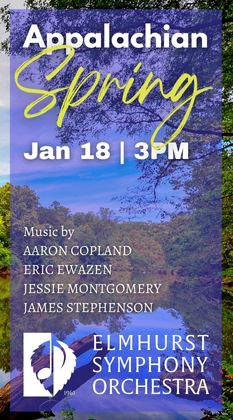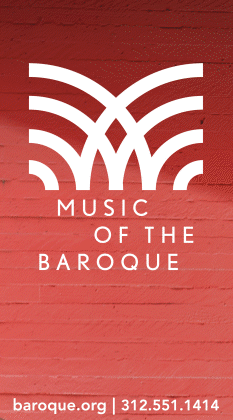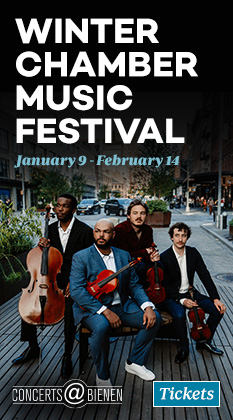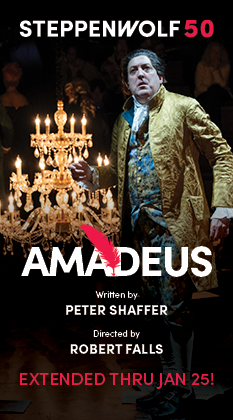Music of the Baroque stream offers a program of mixed doubles
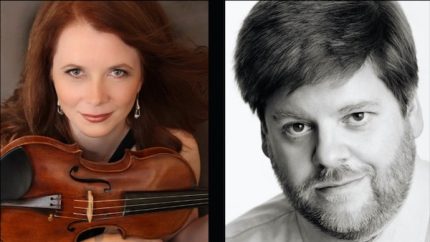
In the midst of the Covid-19 pandemic, the landscape of the music world seems to fall into two virtual camps: pre-recorded concert videos available on demand, or livestreamed performances—each with their relative merits and pitfalls.
For its retooled 50th season—rescheduled twice before on account of the shifting coronavirus status—Music of the Baroque has opted for the latter model: livestreaming monthly concerts that primarily feature string ensembles. The meatier winds-and-voice-heavy repertoire is backloaded toward the season’s end when improving public health conditions and slackening restrictions might allow larger musical forces (and audiences) to convene again.
For the second entry in its 2020-2021 season, entitled “Double Trouble,” MOB turned the spotlight toward its venerable co-assistant concertmasters, Kathleen Brauer and Kevin Case, in a program of double violin concertos streamed live from Skokie’s North Shore Center on Sunday night. In addition to performing solo duties, the two solo violinists shared the responsibility of directing the ten-person chamber orchestra consisting of strings and harpsichord.
The entirety of Arcangelo Corelli’s Op. 6 effectively served to reintroduce the concerto grosso form to the European public in the composer’s day, and his Concerto grosso in F Major, Op. 6, no. 2 was a fitting starting point for the evening’s program. The opening movement is like a concerto unto itself, surveying four contrasting styles across six distinct sections. Brauer, playing primo in this piece, ably led the ensemble through these changes, highlighting the distinct character of each through well-chosen tempi.
Throughout the evening, Brauer and Case proved themselves capable dueling partners, equal in technical proficiency and richness of tone. Yet while the intimacy and scaled-down nature of the program lent itself well to player conducting, the ensemble leaders’ control of the orchestra occasionally faltered at brisker tempi. (Perhaps the socially distanced stage layout was partly to blame.) Such was the case for the second-movement Allegro in the Corelli, which suffered loss of ensemble clarity in articulation on account of a sluggish tempo.
Vivaldi’s Concerto for Two Violins in A Minor, RV 522, marked the first real feature moments for the soloist. Case, playing lead, lent a folkish sweetness to his embellished solo turns throughout the piece. The middle-movement Larghetto was a highlight; the orchestra exercised both attention and restraint as Case and Brauer traced weaving lines over the unison, passacaglia-like accompaniment. The camera work exhibited careful pacing between changes in camera angles and well-framed close-ups of the soloists’ hands, further accentuating the intimacy of the scene.
Handel’s Concerto Grosso in E Minor, Op. 6, no. 3, showed off the overall coordination within the ensemble. Brauer and Case seemed to hit their stride in the tempi, allowing them to play more freely off the supporting players; a trio between the soloists and principal cello Mark Brandfonbrener brought chamber-music levity to the concerto’s Polonaise. Balance, however, was an occasional issue; the contrasts between solo and ripieno sections left something to be desired, and in the latter, the solo violins often became buried in Handel’s heftier orchestration.
The program’s closer, Bach’s “Double” Concerto in D Minor, BWV 1043, yielded some of the evening’s finest playing for soloists and ensemble alike. The work is an essential entry both in the canon of two-violin concerti and of Bach’s oeuvre, and perhaps that familiarity from the evening’s soloists accounted for its success.
The central Largo ma non tanto was utterly captivating, and nearly made one forget that the experience was unfolding remotely. The expansive movement was ideally balanced with an exquisite pas de deux by Brauer and Case at the center; the orchestra was organic and effortless in its accompaniment.
In the final movement, too, MOB’s continuo players proved reliable comrades to their solo counterparts; after recovering from another ragged start to the final Allegro, the orchestra provided taut and coordinated accompaniment over which Brauer’s and Case’s skittering solo lines unspooled with virtuosity and verve. Crisp articulation from the harpsichord and low strings in running bass lines anchored the pulse of the movement, providing a clear runway to bring the movement, and the concert, to a surefooted close.
With so much of the public’s collective experience with live music—or prerecorded music that posits itself to be live—coming through screens, livestreamed concerts like these offer a reminder of the inherent sense of risk involved in a live performance that comes with knowing that there no do-overs, no second chances. The decision to livestream concerts such as this one is a shrewd one on MOB’s part, as its organizers seem to understand that it is the element of spontaneity that in large part lends live performance its magic. This concert, even remotely, came close to replicating that feeling in both its stumbles and most captivating moments.
The concert stream will be available for viewing “On Demand” from March 3 to April 3. Tickets and more info at baroque.org.
Music of the Baroque’s next streaming concert takes places 7:30 p.m. March 29 with music director Dame Jane Glover leading works by Handel and Mozart. The program includes Handel’s “Arrival of the Queen of Sheba” from Solomon and Concerto grosso in A Minor, and Mozart’s Symphony No. 29 and Piano Concerto No. 14 with Inon Barnatan as soloist. baroque.org
Posted in Uncategorized
